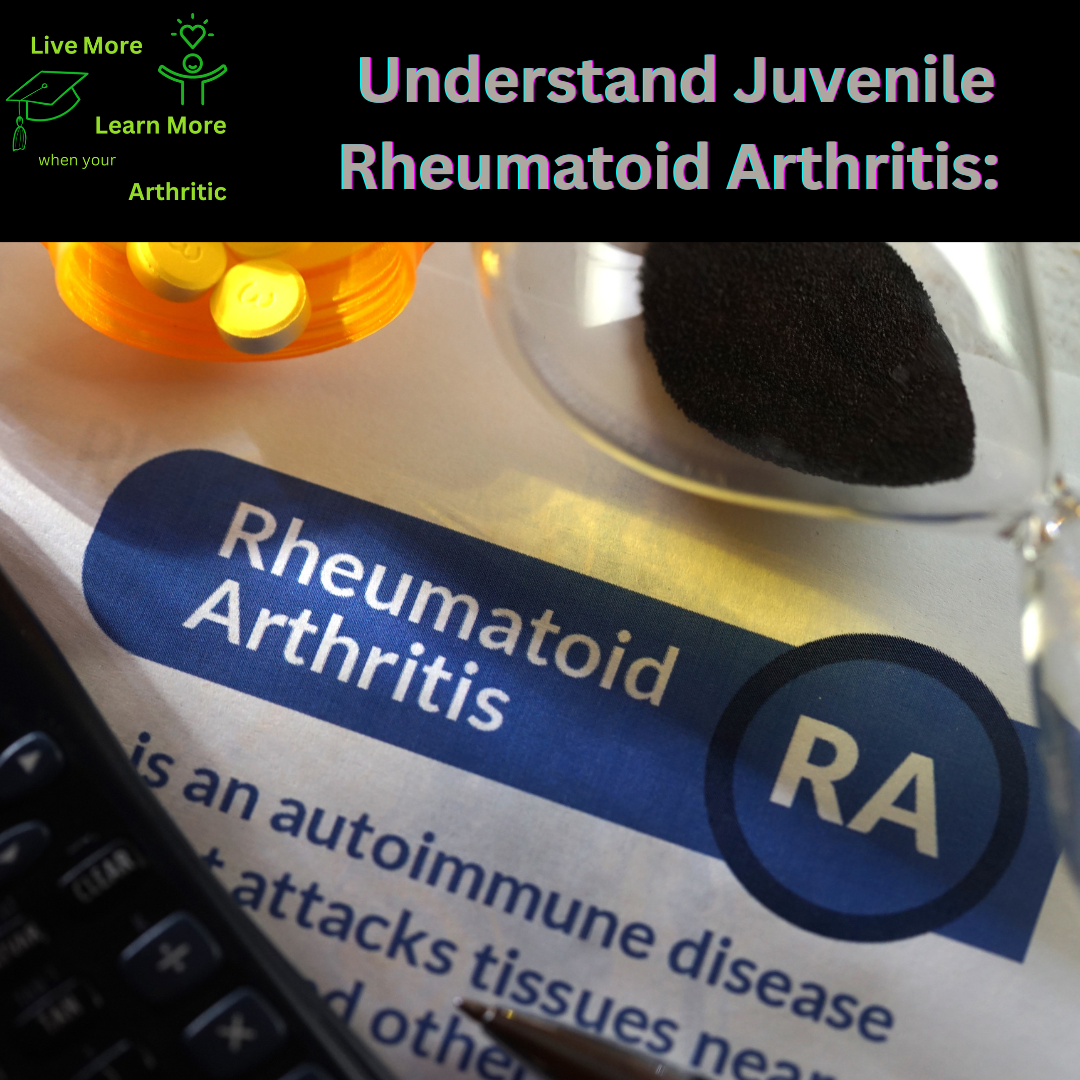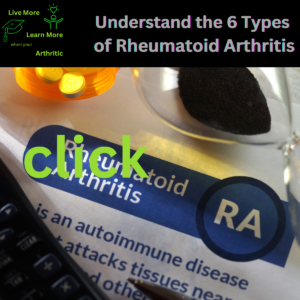
Juvenile Rheumatoid Arthritis (JRA): 2 of 6 Subtypes of Rheumatoid Arthritis (RA)
The Journey with Juvenile Rheumatoid Arthritis (JRA): Navigating the Challenges
Juvenile Rheumatoid Arthritis (JRA), also referred to as Juvenile Idiopathic Arthritis (JIA), is a chronic autoimmune disease affecting children under the age of 16. This condition presents a range of symptoms and complications that can significantly impact a child’s life and require diligent management and support from caregivers and healthcare providers.
Read each of the 6 Rheumatoid Arthritis Subtypes.
6 Subtypes of Rheumatoid Arthritis
Seronegative Rheumatoid Arthritis (RA): 1 of 6 Subtypes of Rheumatoid Arthritis (RA)
Juvenile Rheumatoid Vasculitis (JRV): 3 of 6 Subtypes of Rheumatoid Arthritis (RA)
Juvenile Palindromic Rheumatism: 4 of 6 Subtypes of Rheumatoid Arthritis (RA)
Juvenile Undifferentiated Connective Tissue Disease (UCTD): 5 of 6 Subtypes of Rheumatoid Arthritis (RA)
Juvenile Seropositive Rheumatoid Arthritis: 6 of 6 Subtypes of Rheumatoid Arthritis (RA)
And the Rheumatoid Arthritis Severity Scale
 Affected Joints and Symptom Presentation
Affected Joints and Symptom Presentation
JRA can affect various joints in the body, with the most commonly involved areas including the knees, ankles, wrists, elbows, and small joints of the hands and feet. Symptoms of JRA typically include joint pain, swelling, stiffness (especially in the morning or after periods of inactivity), and limited range of motion. These symptoms can vary in intensity and duration, with some children experiencing periods of flare-ups followed by periods of remission.
Understanding Remission and Disease Progression
Remission in JRA refers to a state where disease activity is minimal or absent, allowing the child to experience relief from symptoms and engage in normal activities. Achieving remission often requires a combination of medication (such as nonsteroidal anti-inflammatory drugs, disease-modifying antirheumatic drugs, and biologic therapies), physical therapy, and lifestyle modifications. However, JRA can be unpredictable, and achieving sustained remission may be challenging for some individuals.
Causes, Triggers, and Autoimmune Nature
The exact cause of JRA is not fully understood, but it is believed to result from a combination of genetic predisposition and environmental factors, such as infections or exposure to certain triggers. JRA is classified as an autoimmune disorder, where the immune system mistakenly attacks healthy tissues, particularly the synovium (the lining of the joints), leading to inflammation and joint damage.
Risk Factors and Onset Age
Risk factors for JRA include a family history of autoimmune diseases, certain genetic markers, and environmental triggers. JRA can onset at any age under 16, with the peak age of onset occurring between 1 to 3 years old and again between 8 to 12 years old. Girls are more commonly affected than boys, particularly in certain subtypes of JRA.
Complications and Long-Term Impact
JRA can lead to various complications, including joint deformities, growth disturbances (due to chronic inflammation affecting bone growth), eye inflammation (uveitis), osteoporosis (bone thinning), and cardiovascular complications. Chronic inflammation associated with JRA can impact overall growth, development, and quality of life, potentially shortening lifespan if not effectively managed.
Inflammation, Tenderness, and Cartilage Damage
Inflammation is a hallmark feature of JRA, contributing to joint swelling, tenderness, warmth, and redness. Prolonged inflammation can lead to cartilage damage and joint erosion, resulting in joint deformities and loss of function over time. Tender joints can limit mobility and physical activity, affecting a child’s ability to participate in sports, play, and daily activities.
Achieving a Higher Quality of Life with Proactive Management
A proactive approach to managing JRA involves early diagnosis, prompt initiation of treatment, regular monitoring of disease activity, and comprehensive care from a multidisciplinary team. Treatment strategies aim to control inflammation, preserve joint function, optimize growth and development, and address emotional and social aspects of living with a chronic illness. Physical therapy and occupational therapy play crucial roles in maintaining joint mobility, strength, and independence.
 Possible Complications and Interconnected Conditions
Possible Complications and Interconnected Conditions
Complications of JRA can extend beyond joint-related issues and affect other organ systems. Children with JRA are at increased risk of developing other autoimmune conditions such as inflammatory bowel disease (IBD), psoriasis, or Sjögren’s syndrome. Regular screenings and monitoring for associated conditions are essential for early detection and management.
In summary, Juvenile Rheumatoid Arthritis is a complex disease that requires a comprehensive and individualized approach to management. With early intervention, proactive treatment, and ongoing support, children with JRA can achieve a higher quality of life, maintain function, and minimize the impact of this chronic condition on their overall health and well-being. Careful coordination between healthcare providers, families, and schools is essential to empower children with JRA to thrive despite the challenges they face.

